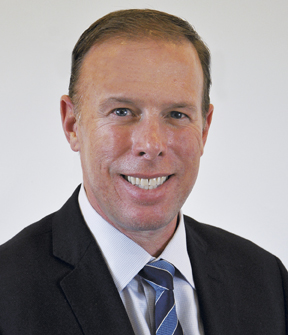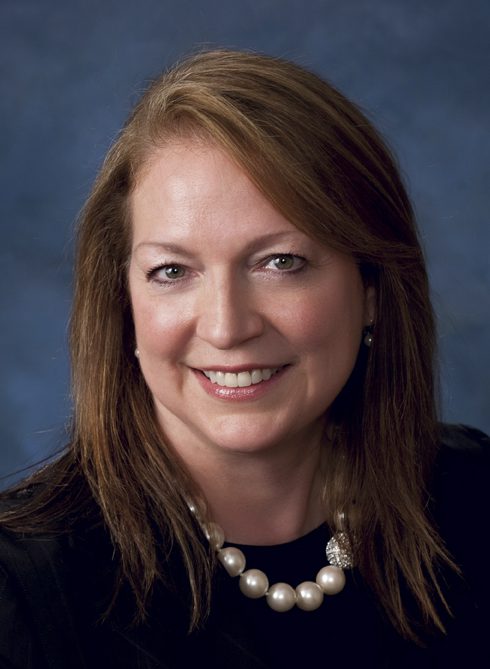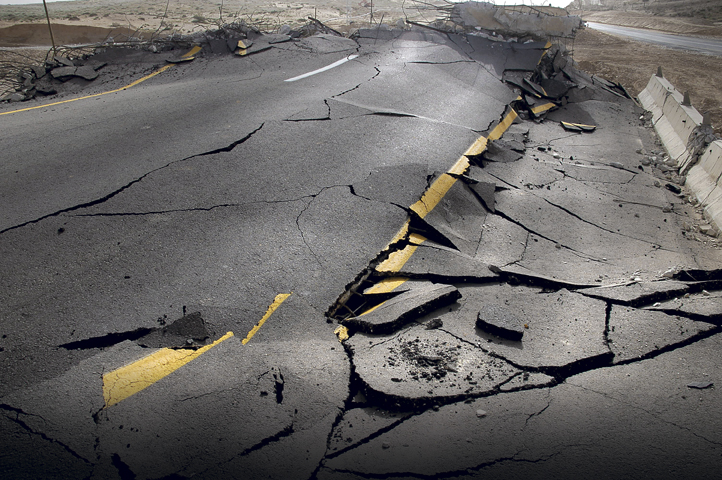Personal lines focus
EARTHQUAKE AND FLOOD
Multiple factors are shaking the markets; don’t get rattled or washed away
By Dave Willis, CPIA
A number of factors are influencing the personal lines earthquake and flood insurance arenas. Capacity is strong. Markets are active. And customer buy-in, although still low, is on the rise.
Craig Poulton, CEO of Poulton Associates LLC, which administers the Natural Catastrophe Insurance Program, sees a long-term trend toward more stable capacity for both coverages. “Traditional capacity providers are being augmented directly and indirectly by what’s referred to as alternative capital, such as catastrophe bonds and collateralized reinsurance,” he says. “Growth in insurance-linked securities (ILS) is generating a massive inflow of risk capital.” He sees this shift resulting in the most stable period of earthquake and flood insurance capacity the industry has seen.
According to Dave Wheelock, vice president, product management, for Berkley One, a Berkley Company focused on insuring high-net-worth clients, “The introduction of sophisticated flood mapping, modeling tools and reinsurance options has piqued the interest of private insurers to enter the flood insurance space where for many years the National Flood Insurance Program (NFIP) was the only option. Statutory filings compiled by S&P Global Market Intelligence say the private market wrote roughly $628 million of flood premium in 2017, up 51% over the prior year.”
“A new company, Palomar Specialty, has recently entered the market, making it easier to write flood, especially in the high-hazard flood zones,” explains Colleen Daley, CPCU, CIC, vice president, personal risk management, with San Francisco-based G2 Insurance Services and a member of the Private Risk Management Association (PRMA). “They don’t require an elevation certificate, and they offer flexible limits on the home, other structures and personal property, and loss of use.” She finds the new option especially useful for clients who want higher limits than NFIP offers.

—John Dickson
President and CEO
Aon Edge
John Dickson, president and CEO of Aon Edge, says, “With global capital markets and climates exposed to unprecedented uncertainty, flood insurance programs are under increasing pressure to exercise disciplined and responsible underwriting.” He says flooding caused by Hurricane Harvey and the 2018 hurricanes in Florida and North Carolina are compelling reminders that flooding is characterized by constant change. “As a result,” he says, “the industry has delivered a host of innovative responses that impact how we discern risk and fortify properties.”
“Floods can and do happen in all kinds of settings,” Wheelock says. “For instance, the Fort Collins (Colorado) flooding in 2013 caused $2 billion in damage after dropping 12 inches of rain in 24 hours. That same year, the largest floods in Calgary in more than 110 years caused $6 billion in damage.”
Quake-related risk issues also are getting special attention. “Most carriers we work with have tightened up on underwriting and eligibility for earthquake insurance,” Daley explains. “Some now require that building retrofits meet the newer 1997 codes. This is particularly difficult in cities such as San Francisco, Oakland, Berkeley and others where homes are quite old. They may have had retrofits done in the 1970s or 1980s but not later.”
Chris Capels, CPCU, ARM, assistant vice president, risk management, at the PURE Group of Insurance Companies, says carriers are offering more choices in earthquake coverage. “There are more deductible options and increased limits for personal property and loss of use, making the coverage and price more appealing for consumers,” he notes.
It’s paying off. “California Department of Insurance statistics show a slight increase in the number of home owners buying earthquake insurance. The vast majority of home owners in the state are still underinsured, but the trend is moving in the right direction.”
Capels believes frequency and severity of disasters in general may be pushing policy counts up. “Wildfires and mudslides in the West, hail in the Midwest, and hurricanes in the East keep catastrophes in the news and on people’s minds,” he notes, “so it’s no surprise more home owners are taking steps to protect themselves.”

—Chris Capels, CPCU, ARM
Assistant Vice President, Risk Management
PURE Group of Insurance Companies
Feeling the effects
According to Lisa Lindsay, executive director of PRMA, “The frequency and severity of flood-related losses and the potential for devastating earthquake losses require agents to be familiar with current and future market offerings and underwriting requirements. This lets them proactively educate and prepare clients to adopt risk management tactics and available insurance solutions.”
Poulton says the stabilized capacity he discussed does not translate to the same rate for all subjects of insurance, especially in flood. “We’ll see significant rate differentiation applied to individual risks as enhanced underwriting capabilities link rates more closely with risk,” he explains. “We should see a relatively stable market for both earthquake and flood.
“As a result,” he adds, “producers will be able to offer many customers unprecedented low rates, while other customers will see prices rise. Savvy producers can increase market share as they offer better alternatives to dissatisfied clients of competitors who are slower to adjust to the new environment.”
Agents, brokers and customers need to understand that constant weather pattern and land use changes exacerbate flood risk. “For example,” explains Dickson, “for both Hurricane Harvey and the catastrophic East Baton Rouge flooding in 2016, fewer than 25% of impacted properties were insured against flood.
“More than ever,” he adds, “property owners cannot lean on historical performance as the sole basis for making insurance purchasing decisions. Just because something didn’t flood yesterday doesn’t guarantee it won’t tomorrow. Too many property owners and insurance agents evaluate flood risk using outdated flood insurance rate maps rather than assessing risk using more modern technology and analytics.”
Wheelock cites a July 2018 report from The University of Pennsylvania’s Wharton Risk Management and Decision Processes Center that shows only about 30% of households in Special Flood Hazard Areas purchase flood insurance. “That figure is smaller in lower risk areas,” he adds. “With greater private market availability, agents have more opportunity to access flood coverage and find solutions for individuals with exposure.”
He says private markets can offer coverage and limits beyond what’s available through the Federal Emergency Management Agency (FEMA). “Particularly for higher valued residences, select high-net-worth insurance providers can extend higher limits for the building and contents, coverage for contents in a basement, and loss of use coverage, all without a waiting period,” he notes.
“The private flood market is good for agents and their clients,” Wheelock adds, “as it increases availability and creates competition, leading carriers to innovate.”
Capels points out that, amid the very real risk of earthquake in California, “home owners rely on the advice of their trusted insurance broker. Brokers can further help protect their clients by encouraging them to purchase earthquake coverage and by educating them on measures they can take to help make their homes stronger and more resilient.”
Challenges still exist. “It is becoming increasingly difficult to present to a carrier what a broker feels is a solid and attractive account—and in the past was a very attractive account,” Daley explains. “A bigger carrier concern than earthquake is what they consider brush. They routinely decline risks that they believe are unfavorable due to location.
“Some companies will write flexible earthquake coverages with competitive pricing,” she notes. “We will often do this so the client can choose a lower deductible and flexible limits, for example, for other structures, hardscape, personal property and loss of use.”
With flood, she adds, “if a client cannot produce an elevation certificate for the high-hazard flood zone or doesn’t want to pay to have an inspection, we use an alternative market that doesn’t require the certificate and offers flexible limits to meet the client’s needs.”

—Lisa Lindsay
Executive Director
Private Risk Management Association
Agent and broker response
Lindsay believes it’s important for agents and brokers to educate clients about their risk exposures. “Prepare for this by being up to date on new technologies and tools available to assess risk exposure and by understanding new underwriting requirements coming down the road,” she advises.
“True flood risk, for example, cannot be assessed using only NFIP flood maps because they don’t take into account storm surge,” Lindsay adds. “New tools and technology give insight into storm surge and other risk factors.” For earthquake risk, she recommends agents educate clients with older homes about retrofitting that was done in the ’70s and ’80s. “Those homes won’t meet underwriting requirements of the future,” she says.
Dickson concurs: “The first and most critical step is to educate customers about true specific risk exposure. Simply selling ‘required’ coverages often leaves gaps. Agents and brokers need to have conversations that go beyond minimum requirements and truly respond to individual consumer needs.
“Second,” he adds, “agents and brokers must stay abreast of industry changes, particularly the evolution of existing products and emergence of new ones. By understanding all available choices, they can deliver solutions that work for their customers.”
“Emphasize the ‘financial’ aspects of the process and not the ‘fear’ components,” Capels advises. “Fear can actually paralyze decision making. A broker working with clients who own a new, modern, seismically strengthened home can recommend they take a higher-deductible plan because the home has a lower likelihood of damage. For clients with an older home, an agent could highlight the benefits of paying to retrofit the home and supplement that further with insurance.”
“Once true risk is assessed,” Lindsay says, “the agent or broker must not only find the best coverage available but also educate clients about loss mitigation and prevention techniques. The complexity of risks facing customers demands that agents and brokers put on their risk manager hats and spend as much time making sure clients don’t have a loss as they do making sure they have the best coverage available.”
Poulton says agents need to provide actionable pricing indications for flood and earthquake perils on both new and renewal business. “We are working to make it as easy as possible for producers to obtain actionable pricing indications,” he says. “We believe this is the key to expanding the earthquake and flood insurance markets. Producer transaction costs must be brought down so there’s an economic incentive to offer these valuable coverage options more frequently.”
“We encourage purchasing flood coverage even if clients are in a lower risk area, as FEMA estimates 30% of flood claims are paid on residences not located in high-hazard flood areas,” explains Dan Cuccia, vice president, risk management, for Berkley One. “Consumers often find flood coverage in lower risk areas is very affordable.”
He also encourages home owners to protect their residences. “In some cases, a robust sump pump with backup systems is enough to keep a basement dry,” he says. “Dry wells, perimeter drains and other drainage systems can be very effective for urban flooding. If a home is exposed to greater threats, flood barrier systems can be set up around a property to divert water.” He says consultation with vetted professionals can help agents assess unique client situations, identify solutions and create pre-flood plans for evacuating people and valuable property.
Parting thoughts
Daley stresses the importance of routinely reviewing a client’s current situation and any changes that could impact coverage and/or limits. “This involves open communication between the client and broker and annual reviews,” she says. “Brokers need to stay on top of marketplace trends and meet carrier reps to ensure they are up to date on underwriting appetite, rate and rule changes, and contract modifications.”
Capels recommends what he calls “conscious preplanning, which will enable people to react calmly and effectively during an emergency. Earthquakes are inevitable; damage doesn’t have to be.” He recommends mobile apps like ShakeAlertLA and the American Red Cross earthquake app to help consumers prepare.
Poulton sees the future of flood insurance, in particular, being “in a competitive marketplace and not in government-sponsored monopolies. Producers must find efficient ways to search the private market for coverage when it comes to catastrophic perils. If they commit to doing so, I believe they will enhance their value to their clients while increasing the profitability of their organizations.”
Dickson adds, “To provide true protection, flood insurance must work for the consumer. This means that their specific needs and lifestyle must be reflected in the coverages they purchase and the price they pay.”
For more information:
Aon Edge
www.aonedge.com
Berkley One
www.berkleyone.com
G2 Insurance Services
www.g2insurance.com
Poulton Associates LLC
www.catcoverage.com
Private Risk Management Association
www.privateriskmanagement.org
PURE Group of Insurance Companies
www.pureinsurance.com





